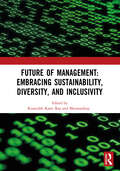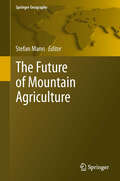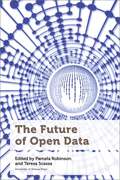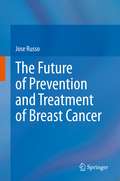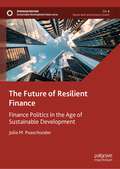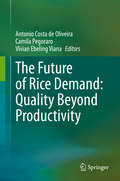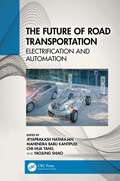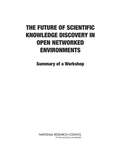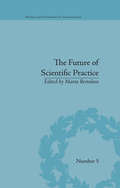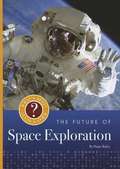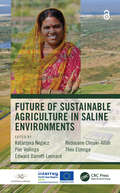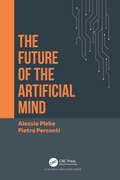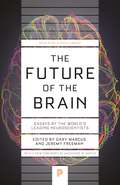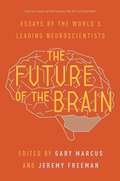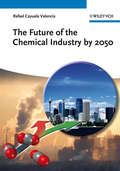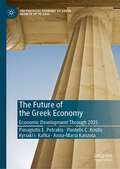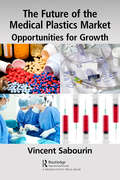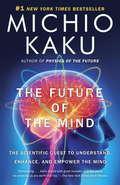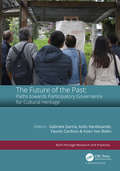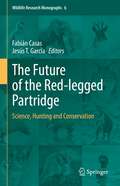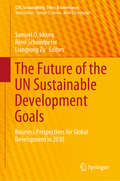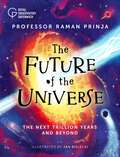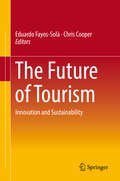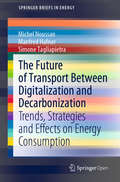- Table View
- List View
Future of Management: Proceedings of ICMR-2024
by Koustubh Kanti RayIn response to unparalleled challenges and opportunities, the scope of management is undergoing a profound transformation. Organisations must adapt and innovate in order to flourish in an era characterised by rapid technological advancements, climate change, shifting demographics, and evolving social norms. The three pillars of modern management— sustainability, diversity, and inclusivity—reflect a comprehensive approach that prioritises the well-being of people and the planet over short-term profits and reflects a commitment to social responsibility. In the current era of management, sustainability has emerged as a critical issue. Organisations must incorporate ethical considerations into their decision-making processes, reduce their carbon footprints, and implement eco-conscious practices as the effects of climate change become more severe. According to Paul Polman, the former CEO of Unilever, “Sustainability is not a charity; it is a business case.”
The Future of Mountain Agriculture
by Stefan MannMountain agriculture is a socially and culturally unique system, but also a regionally important economic sector. In a globalising world, it is clear that fertile areas on all continents will always be used to produce large quantities of agricultural products in order to feed the world and, increasingly, provide biomass as a source of energy. It is far less clear, however, how land use in steep and more peripheral regions will evolve. By definition, farmland in mountain areas is more difficult to work because of steep slopes and missing accessibility. Climate conditions and poor soil quality often add to these adverse conditions. Through overcoming limited views from one region only or from one discipline, this book intends to draw a first truly international perspective on the issue of mountain farming.
The Future of Open Data (Law, Technology, and Media)
by Peter Johnson Tenille Brown Michael Geist Claus Rinner Tracey Lauriault Christine Varga Elizabeth Judge Fernando Perini Haewon Chung Ian Parfitt Lisa Ward Mather Renee Sieber Sarah GreeneThe Future of Open Data est issu d’un projet de recherche en partenariat subventionné pendant plusieurs années par le Conseil de recherches en sciences humaines (CRSH) qui vise à explorer les données gouvernementales géospatiales ouvertes dans une perspective interdisciplinaire. Les chercheurs associés à cette subvention ont adopté une perspective critique en sciences sociales basée sur l’impératif voulant que la recherche devrait être pertinente à la fois pour le gouvernement et pour les partenaires de la société civile œuvrant dans ce domaine.Cet ouvrage s’appuie sur les connaissances développées durant la période de validité de la subvention et soulève la question : « Quel est l’avenir des données ouvertes ? » Les collaborateurs partagent leurs idées à propos de l’avenir des données ouvertes à la suite d’observations et de recherches menées pendant cinq ans sur la communauté des données ouvertes canadiennes selon une perspective critique de ce qui pourrait et ce qui devrait arriver dans un contexte où évoluent les efforts concernant les données ouvertes.Chaque chapitre de ce livre aborde une diversité d’enjeux tout en s’appuyant sur des perspectives disciplinaires ou interdisciplinaires. Le premier chapitre retrace les origines des données ouvertes au Canada et la manière dont la situation a évolué jusqu’à aujourd’hui, en tenant compte du croisement entre le mouvement de souveraineté des données autochtones et les données ouvertes. Quelques chapitres se penchent sur certains dangers et sur les possibilités des données ouvertes, à leurs limites et même aux responsabilités qui s’y rattachent. Une autre série de chapitres examine les horizons appropriés pour les données ouvertes, incluant les données ouvertes dans le Sud global, les priorités des gouvernements locaux en matière de données et le contexte émergent des données ouvertes dans les milieux ruraux.
The Future of Prevention and Treatment of Breast Cancer
by Jose RussoThe objective of this book is to provide a critical analysis of the present prevention strategies for breast cancer, emphasizing the cost benefits and quality of life of the patient. Rooted in the present knowledge of breast cancer biology and prevention and treatment options, the book will describe the future tools that could be available to oncologists and how these new approaches may change the landscape of recurrence and survival of the disease. Special emphasis will be given to the prevention strategies counterposing the present limitations and conflicting prevention guidelines for both hereditary and preventive non-hereditary breast cancer, and propose how the implementation of new strategies based on the present knowledge could save millions of lives and be more cost efficient. The book will present a critical status of the treatment and prevention of breast cancer and detail how a quantum leap could be achieved in the field by applying present basic research knowledge to clinical application.
The Future of Resilient Finance: Finance Politics in the Age of Sustainable Development (Sustainable Development Goals Series)
by Julia M. PuaschunderThis book envisions the future of resilient finance and the societal value of responsible investment. Capturing the Zeitgeist of our post-pandemic new Renaissance, the book describes the contemporary use of economics to improve environmental conditions, widen access to health care, and foster social justice. The Future of Resilient Finance helps students, research scholars, and interdisciplinary global governance practitioners understand resiliency management through strategic finance and responsible economics as a politics and international relations tool. The new age of resilient finance captures monetary means as a source of politics, diplomacy, and international aid. The current outpouring of rescue and recovery funds is portrayed as new generation of resilient finance aimed at peace and prosperity for humankind. The integration of environmental, social, and governance criteria in portfolio choices is covered to grant sustainable value of finance for society.
The Future of Rice Demand: Quality Beyond Productivity
by Antonio Costa de Oliveira Camila Pegoraro Vívian Ebeling VianaThis book aims to provide an overview of the challenges and available technologies to improve rice and provide a response to the challenge posed by increasing world population and the resultant food shortages. Nutritional aspects of rice products and omics and the molecular technologies currently being used are covered in depth. As a staple food for over 50% of the world´s population, an estimated 9 billion people will need to be fed by 2050, and healthy and uncontaminated foods need to reach consumers in developed and developing countries.This makes quality beyond productivity incredibly important and is one of the overriding themes of this work. The Future of Rice Demand: Quality Beyond Productivity offers researchers a better understanding of the nutritional aspects of rice. Omics technologies applied to cereal grain quality have been scarce in the literature published to date, making this text an excellent single source for researchers in regions where rice is a major crop. The first section of the book focuses on the major aspects of the industrial processing of all rice types. Further sections look at contamination prevention and biofortification, special rice types, and omics and other molecular tools used in the mass production and processing of healthy rice products.
The Future of Road Transportation: Electrification and Automation
by Jeyaprakash Natarajan Mahendra Babu Kantipudi Che-Hua Yang Yaojung ShiaoThe Future of Road Transportation presents rapidly growing research towards electrified and automated vehicles. It explains the workings and drawbacks of a conventional vehicle’s powertrain, braking, and steering systems before exploring ADAS equipment and driverless car technologies. Emphasizing the necessary changes in conventional transport systems towards sustainable and smart mobility, this book discusses advanced future mobility technologies and the challenges and considerations for developing sustainable vehicle designs. It overviews the construction details and the research-level contents of the power train, battery, charging infrastructure, and other control systems of the electrical vehicles. The book is intended for automotive and electrical engineers and researchers working on electric vehicle technology, autonomous and automated vehicles, automotive sustainability. It will also be useful for mechanical and electrical engineering students taking courses in Automotive/Vehicle Engineering and Automotive Systems and Design.
The Future of Scientific Knowledge Discovery in Open Networked Environments: Summary of a Workshop
by Paul F. UhlirDigital technologies and networks are now part of everyday work in the sciences, and have enhanced access to and use of scientific data, information, and literature significantly. They offer the promise of accelerating the discovery and communication of knowledge, both within the scientific community and in the broader society, as scientific data and information are made openly available online. The focus of this project was on computer-mediated or computational scientific knowledge discovery, taken broadly as any research processes enabled by digital computing technologies. Such technologies may include data mining, information retrieval and extraction, artificial intelligence, distributed grid computing, and others. These technological capabilities support computer-mediated knowledge discovery, which some believe is a new paradigm in the conduct of research. The emphasis was primarily on digitally networked data, rather than on the scientific, technical, and medical literature. The meeting also focused mostly on the advantages of knowledge discovery in open networked environments, although some of the disadvantages were raised as well. The workshop brought together a set of stakeholders in this area for intensive and structured discussions. The purpose was not to make a final declaration about the directions that should be taken, but to further the examination of trends in computational knowledge discovery in the open networked environments, based on the following questions and tasks: 1. Opportunities and Benefits: What are the opportunities over the next 5 to 10 years associated with the use of computer-mediated scientific knowledge discovery across disciplines in the open online environment? What are the potential benefits to science and society of such techniques? 2. Techniques and Methods for Development and Study of Computer-mediated Scientific Knowledge Discovery: What are the techniques and methods used in government, academia, and industry to study and understand these processes, the validity and reliability of their results, and their impact inside and outside science? 3. Barriers: What are the major scientific, technological, institutional, sociological, and policy barriers to computer-mediated scientific knowledge discovery in the open online environment within the scientific community? What needs to be known and studied about each of these barriers to help achieve the opportunities for interdisciplinary science and complex problem solving? 4. Range of Options: Based on the results obtained in response to items 1-3, define a range of options that can be used by the sponsors of the project, as well as other similar organizations, to obtain and promote a better understanding of the computer-mediated scientific knowledge discovery processes and mechanisms for openly available data and information online across the scientific domains. The objective of defining these options is to improve the activities of the sponsors (and other similar organizations) and the activities of researchers that they fund externally in this emerging research area. The Future of Scientific Knowledge Discovery in Open Networked Environments: Summary of a Workshop summarizes the responses to these questions and tasks at hand.
The Future of Scientific Practice: 'Bio-Techno-Logos' (History and Philosophy of Technoscience #5)
by Marta BertolasoFocusing on cell dynamics, molecular medicine and robotics, contributors explore the interplay between biological, technological and theoretical ways of thinking. The collection makes a strong contribution to current debates in the philosophy of science and the changing role of scientific practice.
The Future Of Space Exploration
by Diane BaileyThis is a picture book about where astronauts have been and where they might go in the future.
The Future of Spacetime
by Stephen Hawking Kip S. Thorne Igor Novikov Timothy Ferris Alan Lightman Richard PriceSelected essays on the theories of Einstein and others in the twentieth century
Future of Sustainable Agriculture in Saline Environments
by Katarzyna NegaczFood production on present and future saline soils deserves the world’s attention particularly because food security is a pressing issue, millions of hectares of degraded soils are available worldwide, freshwater is becoming increasingly scarce, and the global sea-level rise threatens food production in fertile coastal lowlands. Future of Sustainable Agriculture in Saline Environments aims to showcase the global potential of saline agriculture. The book covers the essential topics, such as policy and awareness, soil management, future crops, and genetic developments, all supplemented by case studies that show how this knowledge has been applied. It offers an overview of current research themes and practical cases focused on enhancing food production on saline lands. FEATURES Describes the critical role of the revitalization of salt-degraded lands in achieving sustainability in agriculture on a global scale Discusses practical solutions toward using drylands and delta areas threatened by salinity for sustainable food production Presents strategies for adaptation to climate change and sea-level rise through food production under saline conditions Addresses the diverse aspects of crop salt tolerance and microbiological associations Highlights the complex problem of salinity and waterlogging and safer management of poor-quality water, supplemented by case studies A PDF version of this book is available for free in Open Access at www.taylorfrancis.com. It has been made available under a Creative Commons Attribution-Non Commercial-No Derivatives 4.0 license.
The Future of the Artificial Mind
by Pietro Perconti Alessio PlebeThe Future of the Artificial Mind is about the social and technological challenges posed by the new wave of artificial intelligence, both from a technical and a cognitive perspective. Deep neural networks have brought about tremendous technological improvements. This renaissance in artificial intelligence, after decades of stagnation, has enabled new technologies capable of surpassing human performance, as in the case of visual recognition. The book reviews the key ideas that have enabled these goals to be achieved and their historical origins. The book also considers some of the ethical and social challenges that the future development of artificial intelligence will face. Will humans fall in love with future android dolls? What will artificial sex be like? And what will it be like to travel in cars that will treat us as passengers instead of drivers? But predicting the future appears more magic than science. But when it comes to artificial intelligence, it is a constant temptation. Since it is well known that "the only way to get rid of a temptation is to enjoy it!", the hypothesis considered in the last chapter is that emerging trends point to a near future in which intelligence will be ubiquitous, but it will be difficult to identify its bearer. We may be heading towards an era of widespread intelligence, but an intelligence without accountability.
The Future of the Brain: Essays by the World's Leading Neuroscientists (Princeton Science Library #146)
by Gary Marcus and Jeremy FreemanThe world's top experts take readers to the very frontiers of brain scienceIncludes a chapter by 2014 Nobel laureates May-Britt Moser and Edvard MoserAn unprecedented look at the quest to unravel the mysteries of the human brain, The Future of the Brain takes readers to the absolute frontiers of science. Original essays by leading researchers such as Christof Koch, George Church, Olaf Sporns, and May-Britt and Edvard Moser describe the spectacular technological advances that will enable us to map the more than eighty-five billion neurons in the brain, as well as the challenges that lie ahead in understanding the anticipated deluge of data and the prospects for building working simulations of the human brain. A must-read for anyone trying to understand ambitious new research programs such as the Obama administration's BRAIN Initiative and the European Union's Human Brain Project, The Future of the Brain sheds light on the breathtaking implications of brain science for medicine, psychiatry, and even human consciousness itself.Contributors include: Misha Ahrens, Ned Block, Matteo Carandini, George Church, John Donoghue, Chris Eliasmith, Simon Fisher, Mike Hawrylycz, Sean Hill, Christof Koch, Leah Krubitzer, Michel Maharbiz, Kevin Mitchell, Edvard Moser, May-Britt Moser, David Poeppel, Krishna Shenoy, Olaf Sporns, Anthony Zador.
The Future of the Brain: Essays by the World's Leading Neuroscientists
by May-Britt Moser Edvard I. MoserThe world's top experts take readers to the very frontiers of brain scienceIncludes a chapter by 2014 Nobel laureates May-Britt Moser and Edvard MoserAn unprecedented look at the quest to unravel the mysteries of the human brain, The Future of the Brain takes readers to the absolute frontiers of science. Original essays by leading researchers such as Christof Koch, George Church, Olaf Sporns, and May-Britt and Edvard Moser describe the spectacular technological advances that will enable us to map the more than eighty-five billion neurons in the brain, as well as the challenges that lie ahead in understanding the anticipated deluge of data and the prospects for building working simulations of the human brain. A must-read for anyone trying to understand ambitious new research programs such as the Obama administration's BRAIN Initiative and the European Union's Human Brain Project, The Future of the Brain sheds light on the breathtaking implications of brain science for medicine, psychiatry, and even human consciousness itself.Contributors include: Misha Ahrens, Ned Block, Matteo Carandini, George Church, John Donoghue, Chris Eliasmith, Simon Fisher, Mike Hawrylycz, Sean Hill, Christof Koch, Leah Krubitzer, Michel Maharbiz, Kevin Mitchell, Edvard Moser, May-Britt Moser, David Poeppel, Krishna Shenoy, Olaf Sporns, Anthony Zador.
The Future of the Chemical Industry by 2050
by Rafael Cayuela ValenciaDiscussing the technological supremacy of the chemical industry, including pharmaceuticals, and how it will adopt a leading position to solve some of the largest global challenges humans have even seen, this book details how the industry will address climate change, aging populations, resource scarcity, globality, networks speed, pandemics, and massive growth and demand.Following a detailed introduction to some of the megatrends shaping our world over the forthcoming decades, the book goes on to provide several scenarios of how the world could look by 2050, including 'business as usual' and a 'sustainable' one. Chapter 3 gives a comprehensive overview of the current status, while providing a short historical review of the chemical industry, its origins, achievements and fundamentals. The following chapter reviews the potential impact of each of the selected megatrends on the industry, while Chapter 5 proposes how it could look by 2050. Several features of the chemical industry are presented and discussed, including the industrial relevance from an economical, technological and profitability point of view. The largest chemicals markets in absolute and per capita bases and the areas and countries with largest growth potential for chemicals, pharmaceuticals and feedstock. This chapter also reviews the impact of climate change on the chemical industry from a feedstocks and products point of view and, more specifically, the potential costs in reducing CO2 emissions. A final, concluding chapter summarizes the forthcoming megatrends and potential challenges, opportunities and the outlook for the industry as a whole.
The Future of the Greek Economy: Economic Development Through 2035 (The Political Economy of Greek Growth up to 2030)
by Panagiotis E. Petrakis Pantelis C. Kostis Kyriaki I. Kafka Anna-Maria KanzolaThis book introduces the Political Economy of Alternative Economic Futures for the Greek economy up to 2035. The analysis is not restricted to the presentation of a series of forecasts but aims to develop a comprehensive framework for Greece’s future. The analysis covers five realms regarding alternative economic futures, which outline the political economy of Greece: sustainable development; sustainable governance; inclusive growth; evolution of human behaviors; and dynamic growth. A growth, an unsustainable growth, a transformation, and a falldown scenario are generated based on the severity of key-uncertainty factors' effects.
The Future of the Medical Plastics Market: Opportunities for Growth
by Vincent SabourinPlastics have occupied an important place in the modern medical industry. It has substituted traditional devices and products made of metal, other materials, and ceramics. Over recent years, increased reliance on transparent plastic pharmaceutical and medical products has produced remarkable breakthroughs that improve medical attention delivery and allow it to be more comfortable for the masses to live better and longer lives. The purpose of this handbook is to provide a strategic perspective on the market to identify opportunities for growth and promising niches in the medical plastics market. It also helps in analyzing emerging trends in medical plastics to facilitate new product development. The medical plastics market is a new field with a broad scope and unending opportunities for manufacturers and suppliers and medical practitioners from healthcare. With a combination of the right material and technology, it has a lot to offer to the patients with affordable pricing. By keeping the worth of the medical plastics market in mind, we have set some objectives. This book identifies growth factors in the medical plastics market and analyzes critical factors of success to compete. The author presents background on the medical plastics market by its usage, products, processes, and innovation. He also reviews existing studies on the medical plastics market for topics like market size, market growth, segment growth, and geographic markets.
The Future of the Mind: The Scientific Quest to Understand, Enhance, and Empower the Mind
by Michio Kaku#1 NEW YORK TIMES BESTSELLER • The renowned theoretical physicist and national bestselling author of The God Equation tackles the most fascinating and complex object in the known universe: the human brain.&“Compelling…Kaku thinks with great breadth, and the vistas he presents us are worth the trip.&” —The New York Times Book ReviewThe Future of the Mind brings a topic that once belonged solely to the province of science fiction into a startling new reality. This scientific tour de force unveils the astonishing research being done in top laboratories around the world—all based on the latest advancements in neuroscience and physics—including recent experiments in telepathy, mind control, avatars, telekinesis, and recording memories and dreams. The Future of the Mind is an extraordinary, mind-boggling exploration of the frontiers of neuroscience. Dr. Kaku looks toward the day when we may achieve the ability to upload the human brain to a computer, neuron for neuron; project thoughts and emotions around the world on a brain-net; take a &“smart pill&” to enhance cognition; send our consciousness across the universe; and push the very limits of immortality.
The Future of the Past: Paths towards Participatory Governance for Cultural Heritage
by Gabriela GarcíaThe Future of the Past is a biennial conference generally carried out during the commemoration date of the incorporation of Santa Ana de Los Ríos de Cuenca Ecuador as a World Heritage Site (WHS). It initiated in 2014, organized by the City Preservation Management research project (CPM) of the University of Cuenca, to create a space for dialoguing among interested actors in the cultural heritage field. Since then, this space has served to exchange initiatives and to promote coordinated actions based on shared responsibility, in the local context. The third edition of this conference took place in the context of the 20th anniversary of being listed as WHS and a decade of CPM as the Southern host of the PRECOM³OS UNESCO Chair (Preventive Conservation, Maintenance and Monitoring of Monuments and Sites). For the very first time, and thanks to the collaboration with the Raymond Lemaire International Centre for Conservation of the University of Leuven (Belgium), the conference expanded its local scope. On this occasion, contributions reflected round a worldwide challenge in the cultural field: revealing the paths towards participatory governance of cultural heritage. Participatory governance is understood as institutional decision-making structures supported by shared responsibilities and rights among diverse actors.
The Future of the Red-legged Partridge: Science, Hunting and Conservation (Wildlife Research Monographs #6)
by Fabián Casas Jesús T. GarcíaThere has been a recent upsurge of red-legged partridge research in most countries where the species is distributed, but no comprehensive review of that fresh and relevant multidisciplinary and international knowledge is available. In fact, this is probably the first scientific book on this important species, apart from Dick Potts’ excellent works on British-introduced population, or ONCFS’s (Office Nationale de la Chasse et le Faune Sauvage, France) older technical reports. This is in strong contrast with a plethora of literature in hunting magazines or non-academic books, not often precise, realistic, or well informed. Thus, the book fills a great bibliography gap that could have important social impact. The common thread of the book is the prominent role a species like this may play for research, from basic physiological or ecological knowledge to socio-economics of hunting and the rural world. The general framework of the book [I1] is the important role that hunting and game management may play in both rural economies and biodiversity conservation, with the partridge as flag species, and also in identifying the “dark drift” that industrial, incorrectly deployed management, or hunting vision may have on both sustainability of resources and nature conservation at large. The final aim of the book is identifying the best future scenario, both for partridge hunters and managers as well as the general public.
The Future of the UN Sustainable Development Goals: Business Perspectives for Global Development in 2030 (CSR, Sustainability, Ethics & Governance)
by Samuel O. Idowu René Schmidpeter Liangrong ZuThis book provides a business-oriented analysis of the United Nations (UN) Sustainable Development Goals (SDG). In order to assess their impact on businesses and corporations, the book addresses all 17 goals and a broad range of industries. Gathering contributions from Africa, Europe and Asia, it presents both critical reviews and case studies. In turn, the book seeks to predict likely developments during the next decade. To do so, it examines evidence from today’s business world and how companies and corporations have been adopting the SDGs since their release. In this regard, it discusses the changes that will be required and how the agenda will affect the continent’s development path. An underlying theme throughout the book is the role of monetary value and investment for sustainable development: whether through financing, enhanced turnaround resulting from a more educated population, or more socially innovative entrepreneurs.
The Future of the Universe
by Raman PrinjaExperience the explosive and colourful future of the cosmos, zooming trillions of years ahead in time with Professor Raman Prinja, published in association with Royal Observatory Greenwich.The Future of the Universe starts the future clock NOW and rockets readers along a forward time line to discover what scientists predict will happen to the universe, including a shiny new ring on Mars, Earth's axis flip and a dramatic galaxy crash!This is the first book of its kind for this age - putting all the future events into one place along a clear timeline, from the return of famous comets in a few decades, to the dark end of the Universe a nonillion years from now.Professor Raman Prinja is the international, multi-award-winning Head of Department for Physics and Astronomy at University College London and a celebrated children's author of many books, including Planetarium and Wonders of the Night Sky. Illustrator Jan Bielecki's action-packed, vivid artwork plucks these astonishing phenomena out of the distant future, and explodes them on the page - sizzling red giant stars and deep, mysterious dark energy; doomed moons and trailing comets - they're all inside The Future of the Universe!Professor Prinja pens this unique look at the Universe's future as his follow-up to the definitive and exciting Wonders of the Night Sky, which introduces anyone with a patch of sky and a curious mind to exploring the marvels on display in today's Universe. The next generation of Universe explorers can easily engage with astronomy through these stunning books, no expensive equipment needed.
The Future of Tourism: Innovation And Sustainability
by Chris Cooper Eduardo Fayos-SolàThis book presents the foundations for the future of tourism in a structured and detailed format. The who-is-who of tourism intelligence has collaborated to present a definitive blueprint for tourism reflecting the role of science, market institutions, and governance in its innovation and sustainability. The book adopts a comprehensive approach, exploring recent research and the latest developments in practice to inform the reader about instruments and actions that can shape a successful future for tourism. Broad in scope, the book incorporates the perspectives of leading tourism academics, as well as the views of tourism entrepreneurs, destination managers, government officials, and civil leaders. The book is divided into three parts, the first of which addresses the scientific facets of innovation, analyzing the challenges and opportunities that technology provides for organic and disruptive developments in tourism, which will shape its future. In turn, the second part examines socio-cultural paradigms – with a view to dismantling traditional barriers to innovation. It also explores the role of heritage and the ethics of inclusiveness as drivers for sustainable tourism. The third part investigates new ways and means in governance and policy making for tourism. It introduces advances such as strategic positioning, symbiotic partnerships, and innovative management, and closes by presenting governance frameworks for an inclusive and sustainable future of tourism.
The Future of Transport Between Digitalization and Decarbonization: Trends, Strategies and Effects on Energy Consumption (SpringerBriefs in Energy)
by Michel Noussan Manfred Hafner Simone TagliapietraEnergy systems are rapidly transitioning towards decarbonization, thanks in part to innovative digital technologies and changing mobility demands. This open access book examines the decarbonization and digitalization transformation in the transport sector, with a particular focus on energy consumption. By studying historical trends and outlining future scenarios, the authors illustrate the evolution of energy consumption in the transport sector, compare alternative decarbonization strategies, and analyze digitalization trends and their effects on energy consumption. The book addresses a broad readership of both academics and professionals working in the energy and transport industries, as well as readers interested in the ongoing debate over energy, mobility and climate change.
